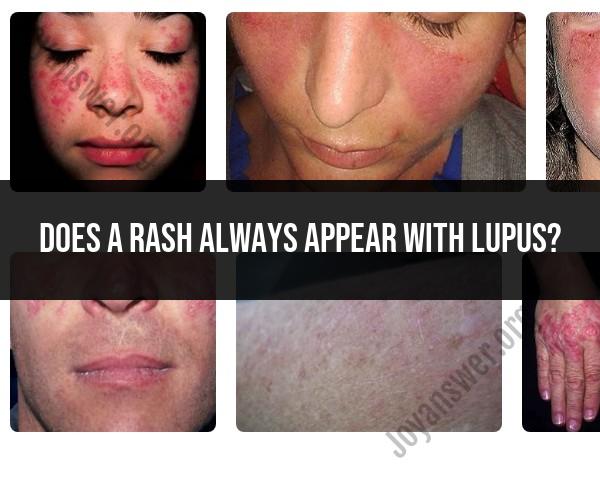Does a rash always appear with lupus?
No, a rash does not always appear with lupus. While skin rashes are common in lupus and are considered one of the characteristic symptoms, not everyone with lupus will experience a rash. Lupus is a complex autoimmune disease that can affect various organs and systems in the body, leading to a wide range of symptoms.
The most common type of rash associated with lupus is called a "butterfly rash" or malar rash, which typically appears on the cheeks and over the bridge of the nose in a shape resembling a butterfly. However, lupus can also cause other types of skin rashes, such as discoid rash (raised, scaly patches) and photosensitivity (increased sensitivity to sunlight).
It's important to note that lupus is a highly individualized disease, and the symptoms can vary widely from person to person. Some individuals may have mild symptoms, while others may experience more severe manifestations. Additionally, lupus can affect different organ systems, leading to a diverse array of symptoms beyond skin involvement.
If you suspect you may have lupus or are experiencing symptoms associated with the disease, it's crucial to consult with a healthcare professional for a comprehensive evaluation and proper diagnosis. They can perform relevant tests, such as blood tests and imaging studies, to assess the presence of autoimmune markers and other indicators of lupus.
Is a rash a consistent symptom in individuals diagnosed with lupus?
While a rash is a common symptom of lupus, it is not consistent in all individuals diagnosed with the disease. In fact, only around 50% of people with lupus develop a rash. This means that a rash is not a reliable indicator of lupus, and its absence does not rule out the possibility of the disease.
Here are some factors that can influence the presence or absence of a rash in lupus:
Type of lupus: Different types of lupus can affect different parts of the body and cause different symptoms. For example, discoid lupus primarily affects the skin, making a rash highly likely. However, systemic lupus erythematosus (SLE) can affect various organs and systems, and a rash may be absent or less prominent.
Severity of the disease: In general, individuals with mild lupus may not experience any skin symptoms, while those with more severe cases are more likely to develop a rash.
Medications: Certain medications used to treat lupus, such as corticosteroids and immunosuppressants, can suppress the immune system and reduce the likelihood of developing a rash.
Individual factors: Each person's immune response and genetics can play a role in whether or not a rash develops. Some individuals may be more susceptible to skin manifestations than others.
Even though a rash is not always present in lupus, it remains a common and significant symptom. The most characteristic rash associated with lupus is the butterfly-shaped rash across the cheeks and nose. Other types of rashes can also occur, including:
- Discoid lesions: Red, scaly patches on the skin, most commonly on the face, scalp, and ears
- Annular lesions: Ring-shaped rashes
- Malar rash: Flat or raised red patches on the cheeks and nose
- Maculopapular rash: Small, red bumps on the skin
- Photosensitive rash: Rash that worsens with sun exposure
It is crucial to remember that the absence of a rash does not exclude the possibility of lupus. If you experience other symptoms suggestive of lupus, such as:
- Fatigue
- Joint pain
- Fever
- Swelling
- Hair loss
- Mouth sores
It is essential to consult a healthcare professional for diagnosis and proper management. Early diagnosis and appropriate treatment are vital for controlling the disease and preventing complications.













